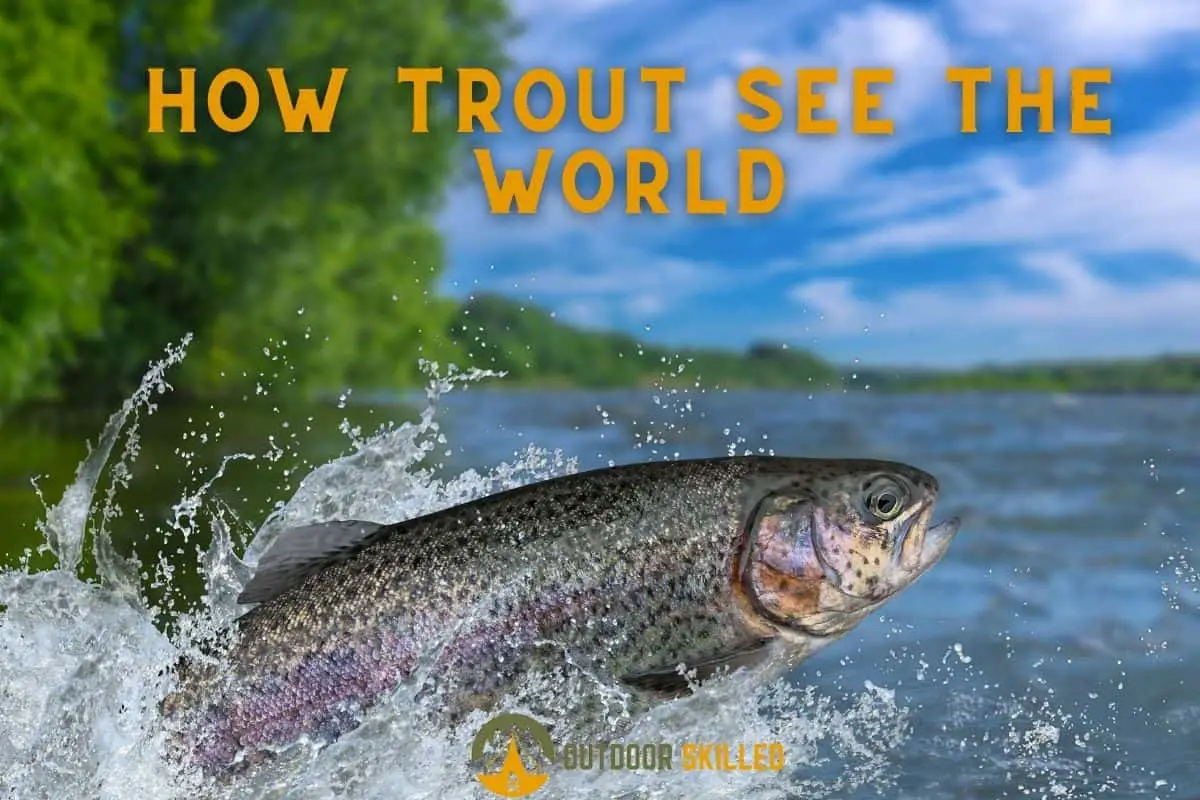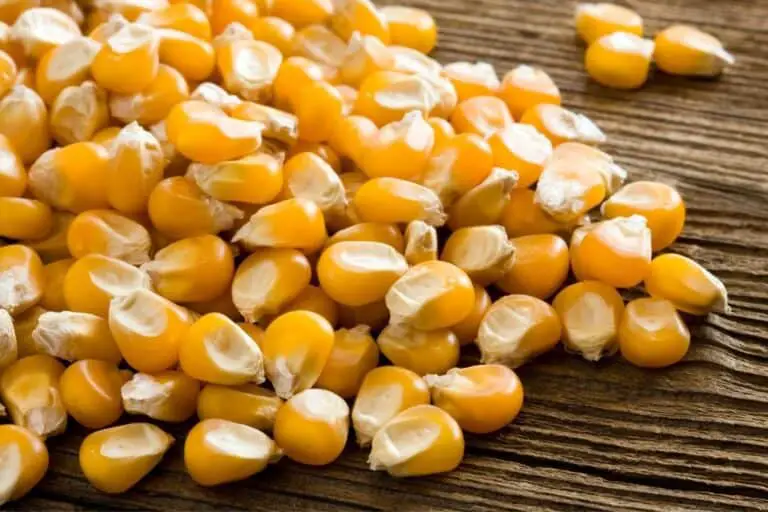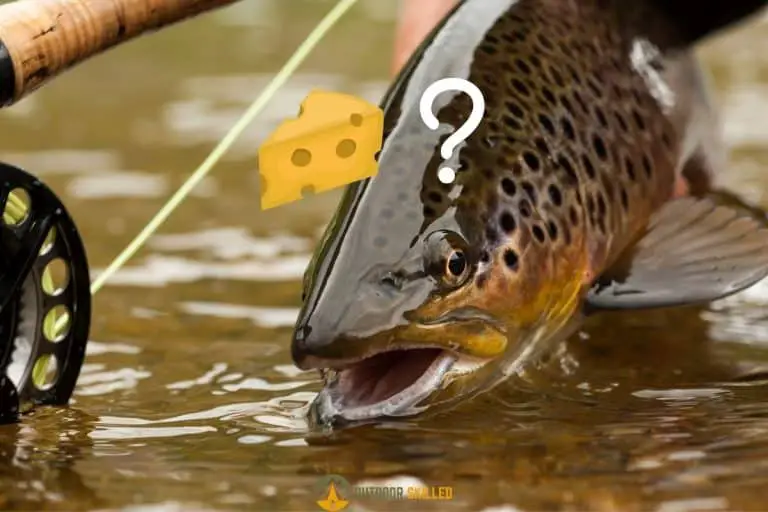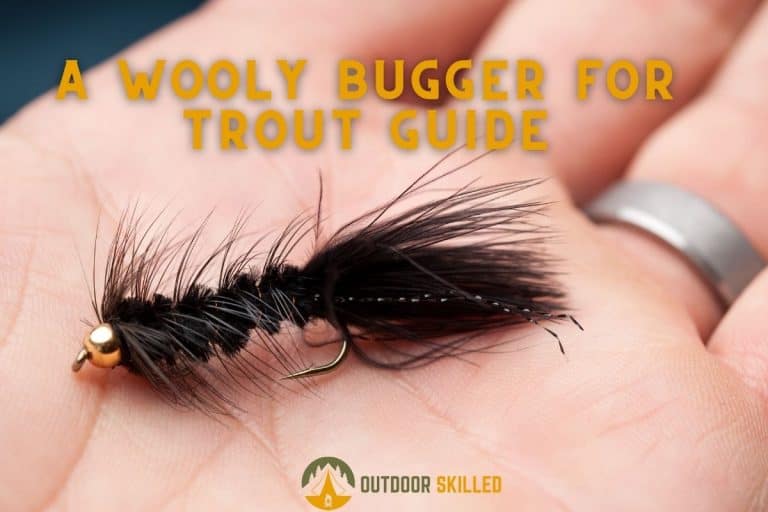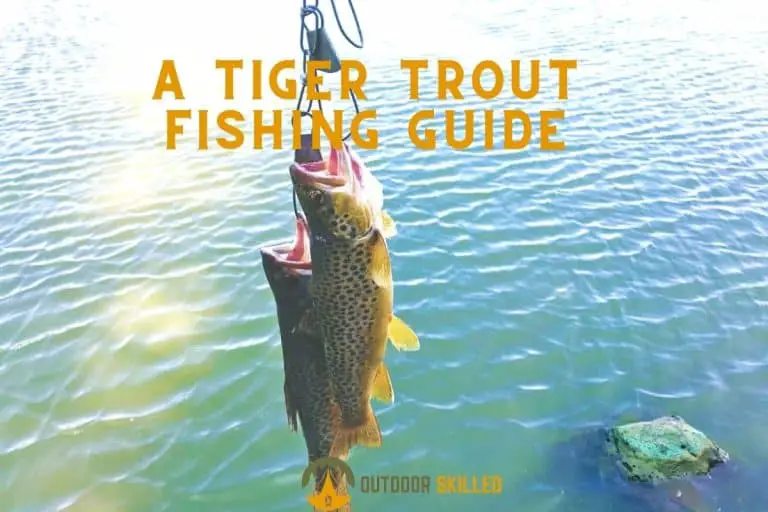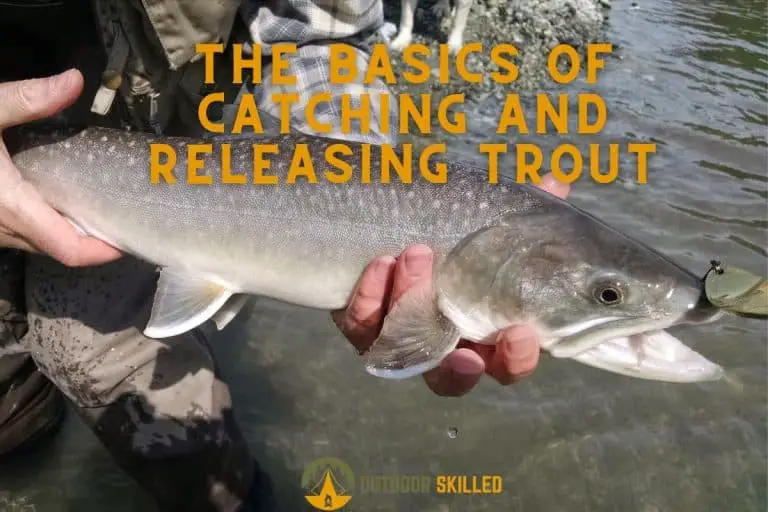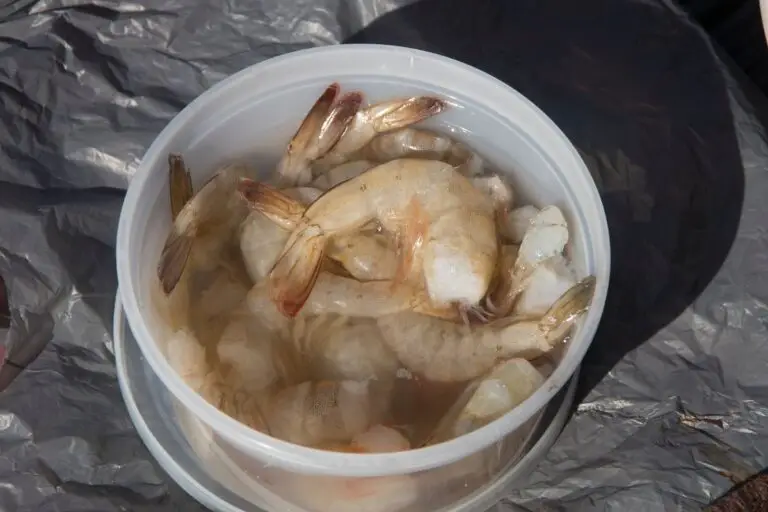Can Trout See You? How Trout See The World (& What Attracts Them)
Knowing a lot about trout sight and vision allows you to imagine what they see and act accordingly. How they perceive color can help you pick proper lure colors to boost your chances of catching them. It can also give you insights into how they act in darker conditions for deep water fishing or nighttime fishing.
Can trout see you? Yes, trout can see you. Trout have the same photoreceptors in their retina as humans: cones and rods that allow them to see in dark circumstances and perceive color. Trout see as well as humans with one difference in the vision field, as trout see only what’s right in front of their nose.
Keep reading to know more about how trout see the world and what can attract them.
If you are already ready to go Trout fishing, make sure to check out my recommended Trout Fishing Lines here. These are the ones that have truly stood out the test of time with me, and they will surely prove as useful to you as they did with me.
Table of Contents
Do Trout Have Good eyesight?

It’s enough to say that trout see as well as humans with the same eye biology but different functions. Their eye has an iris, a lens, and a retina with both cone cells and rod cells exactly like our eyes, but each of them functions differently.
The human iris, for example, dilates and constricts to control the amount of light reaching the retina while the trout’s iris is fixed and the retina itself regulates itself to changing light levels. Human eyes can focus by changing the shape of the lens while a trout’s eye focuses by moving the lens closer to or further from the retina.
The trout eyes, like ours, also have photoreceptors in the retina: cones and rods. Cones respond differently to light of different wavelengths, and are responsible for color vision, while rods optimize vision in dim conditions to allow them to perceive the world in darker circumstances.
Unlike humans, trout use only one type of receptor at a time. They either use the cones or the rods, and the overlap at dawn and dusk can be an exception as they are able to use both. The cones are used during the day allowing sharp, full-color vision, while rods work the night shift turning the vision into black and white with better perception in the dark.
The shape of the trout eye is another difference between it and the human eye. Trout have a circularly-shaped orbit unlike us. The circular shape allows for two simultaneous focal lengths, one to the front and one to the side.

This allows trout to have a forward-looking field of vision that is functional for feeding in front of a trout’s nose. An added notch in the forward edge of a trout’s iris allows it to better see across the bridge of its nose.
The second focal length keeps the far-field of vision in perfect focus all the time, which is essential to detect predators. This allows trout to be nearsighted to the front and farsighted to the side. Imagine having your peripheral vision in sharp focus simultaneously and you’ll get what it’s like to see as a trout.
Can Trout See Humans?
Yes, tout can see humans. When objects on the surface or beyond first appear in the window of vision or come in view on the edge of the circular window of vision, they appear much shorter and wider than they actually are. This could be one of the reasons why trout get easily spooked if they detect you from above.
The more you get closer to the center of their window of vision, the less distorted you’ll look to a trout. You gain your natural form in their eyes when you get closer. Objects directly overhead appear exactly as they should.
Another interesting thing about trout vision is that objects on the surface are a backlight from the fish’s perspective, appearing mostly as a silhouette as if you’re looking at someone standing with their back to a window on a sunny day. The reason why this happens is that the refractive index of its cornea is almost exactly that of water, allowing trout to see more clearly through water than air.
What Colors Can Trout See?
Trout can see all colors, but in a different way from what we do. Given that the water is a poor light conductor, it distorts the nature of the color depending on how much light it absorbs depending on its wavelength or color. Long-wavelength light, colors like red and orange, get quickly absorbed and fade to black, while short wavelengths like blue and violet are absorbed more slowly.
The trout cone cells allow it to perceive color only in clear, shallow water. The full detail of color is seen only at a close range. The ability to detect color becomes completely eliminated within 12 feet (3.6 meters). Shades of blue, then red, and then green shades are more distinguishable to trout from further distances.
Best Lure Colors Choices For Trout
The best colors for your lures when fishing for trout are red, orange, and yellow when the water is clear, and yellow and green in darker waters. That’s because red appears brighter than it does to humans at a closer look, but it turns black at a greater distance.
At night, the trout’s ability to discern colors becomes completely eliminated as the rods cells take charge and cones cells that are responsible for colors are disengaged. Black, then, becomes the most visible color making the best lure choice is the ones that use contrasts, not color.
Gearing up for Trout fishing already? Why don’t you check out my recommended Trout fishing rods here, they will definitely earn their position on your gear list and prove more than useful in your next fishing adventure.
You can also check out my recommended Trout Spinning reels here. They’re easily the best options available, and I mean that after endless testing of the other options out there.
Can Trout See In Muddy Water?
The water quality and clarity indeed affect the trout’s visual acuity, but they can still see in muddy waters, the shallower they are the better they can see. They can see well enough to spot lures and catch them, however, they may not be able to discern its true color.
It’s better to use dark-colored lures in the muddy water because they contrast well with brownish water and can be easier for trout to see. Lures in black and green really stand out in brown water. Other colors may not be visible in muddy waters, light colors like brown and tan tend to blend in with brown water and become hard to detect.
The best bait choice for muddy water is dark-colored nymphs. The dark peacock body of the prince nymph, for example, contrasts well with the brown water and allows it to stand out more. While the soft wings of it allow it to imitate the movement of many different insects, making it the ideal choice for catching trout.
Related Questions
Do Trout Bite After Heavy Rain?
Yes, trout bite after heavy rain. In fact, targeting the first hour or two following heavy rain can boost your chances of getting a trout to strike. After heavy rain, the water level rises and the water becomes darker which encourages trout, especially big ones, to roam around to feed.
Do Trout Bite After Being Stocked?
Yes, trout bite right after being stocked. Your chances to catch trout is right after it’s stocked in the water body or after a maximum of two hours. You can still catch them a long time after being stocked, but they’ll be less active and the number caught will be a lot less.
What colors are trout attracted to?
Trout are attracted to colors such as white, gold, brown, green, black, silver, pink, orange, yellow, and red. They get attracted to any other color that matches their forage. In muddy, unclear water go for yellow and green. In clear waters go for red, orange, and yellow.
Helpful Resources
If you like this article, please share it or pin it, you can find the share buttons below. We will really appreciate it ❤️

